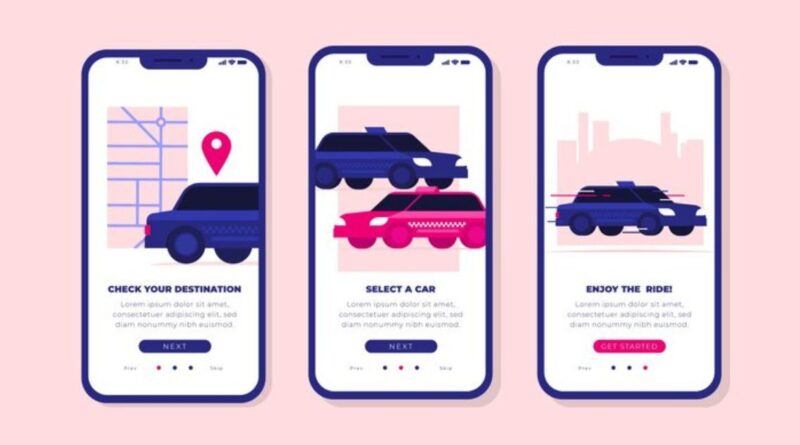7 Steps to Build a Ride Sharing App: Key Features and Cost 2024
As 2024 is coming to an end, the demand for ride-sharing apps is at an all-time high. With urbanization, the need for convenient and eco-friendly transport options is proliferating. Entrepreneurs and businesses are seizing the opportunity to create their own ride sharing platforms to meet this rising demand. Whether you’re an established ride sharing app development company or someone just venturing into the on-demand app space, understanding the process of building a ride sharing app is crucial.
In this guide, we’ll walk you through the essential steps to build a ride sharing app, the key features to include, and the cost considerations in 2024.
Understanding the Core Features of a Ride Sharing App
Before we dive into the development steps, it’s essential to identify the core features every ride sharing app must have. The app’s success hinges on offering an intuitive and seamless experience for both passengers and drivers. Let’s explore the key features needed.
Passenger App Features
- User Registration: Easy sign-up options via social media or email.
- Booking Interface: Simple, one-click ride booking with real-time fare estimates.
- Ride Tracking: Live location tracking of the driver via GPS.
- Payment Integration: Multiple payment options (credit card, digital wallets, etc.).
- Review and Rating System: For passengers to rate drivers and provide feedback.
- Ride History: A detailed summary of past rides, including payments and routes.
Driver App Features
- Driver Profile Setup: Allows drivers to register, upload documents, and get verified.
- Ride Requests: Push notifications for new ride requests.
- Navigation Assistance: In-app map integration for smooth navigation.
- Earnings Dashboard: Allows drivers to track their earnings and tips.
- Ratings and Feedback: View and respond to passenger ratings.
Admin Panel Features
- Dashboard: A comprehensive view of app activity, ride statistics, and financial reports.
- Driver Management: View driver profile documents and approve or disapprove registrations.
- Passenger Management: Handles user complaints, refunds, and disputes.
- Promotions and Discounts: Manage promo codes and referral programs.
- Real-Time Analytics: Insights into user behavior, ride frequency, and app performance.
Step-by-Step Guide to Building a Ride Sharing App
Now that we know the essential features let’s walk through the seven steps to build a ride sharing app successfully.
Step 1: Market Research and Defining Your Niche
Every successful app begins with thorough market research. Analyze the competitive landscape. What are the current leaders in the market doing well, and where do they fall short? Identify gaps you can fill, such as luxury rides, eco-friendly vehicles, or services tailored for corporate clients.
For instance, if you’re a ride sharing app development company looking to cater to eco-conscious users, you could focus on developing an all-electric vehicle fleet. Understanding your niche will help you create a value proposition that sets you apart.
Step 2: Hiring a Mobile App Development Company
Once you’ve defined your niche, it’s time to find the right mobile app development company to bring your vision to life. Make sure to partner with a company experienced in ride sharing app development and on-demand app solutions. The company should offer comprehensive services, including design, development, and post-launch support.
A good development team will also help you choose the right tech stack (discussed later) and ensure that the app’s architecture is scalable and secure.
Step 3: Creating a User-Friendly App Design
The user interface (UI) and user experience (UX) design are crucial to your app’s success. Work closely with your mobile app development company to create a sleek and intuitive design. The booking process should be simple, the app should load quickly, and it should be responsive across all devices.
Step 4: Choosing the Right Tech Stack
The tech stack is the backbone of your app. The right combination of frontend and backend technologies will ensure that your app performs smoothly. Most ride sharing app development companies use technologies like:
- Frontend: React Native or Flutter for cross-platform compatibility.
- Backend: Node.js, Python, or Ruby on Rails.
- Database: MySQL, MongoDB, or Firebase.
- APIs: Google Maps API for navigation, Twilio for SMS notifications, and PayPal/Stripe for payment integration.
Step 5: Integrating Core Features
This is where your app comes to life. Collaborate with your on-demand app development company to integrate the core features mentioned earlier, from user profiles and ride tracking to payment systems. Ensure that both the passenger and driver apps are fully functional and offer a seamless user experience.
Step 6: Testing and Quality Assurance
Before launching, your app needs to undergo rigorous testing. Ensure the mobile app development company conducts both manual and automated testing to catch bugs and ensure smooth functionality across different devices and operating systems. Remember, the user experience can make or break your app’s success, so this step is crucial.
Step 7: App Deployment and Maintenance
Once the testing phase is complete, it’s time to deploy the app to the Apple App Store and Google Play Store. Post-launch, you’ll need continuous updates and maintenance to fix bugs, introduce new features, and ensure the app’s security.
Cost to Develop a Ride Sharing App in 2024
The cost of developing a ride sharing app in 2024 can vary greatly depending on the complexity of the app, the development team’s location, and the time required to complete the project. Here’s a breakdown:
- Basic App: A minimal viable product (MVP) with essential features like user registration, booking, and payment can cost anywhere between $40,000 and $70,000.
- Mid-Tier App: With additional features like in-app chat, ratings, and driver analytics, the cost could rise from $80,000 to $120,000.
- High-End App: A feature-rich app with AI-driven route optimization, dynamic pricing, and real-time analytics can cost upwards of $150,000.
Additionally, ongoing maintenance, server costs, and post-launch marketing can add to the overall budget.
The Future of Ride Sharing Apps
As technology evolves, so too does the ride sharing industry. By 2025 and beyond, advancements in autonomous vehicles, electric cars, and AI-powered route optimization will continue to shape the landscape. Future ride-sharing apps may offer hyper-personalized services, seamless integration with smart cities, and even blockchain-based payment systems.
Conclusion
Building a ride sharing app by the end of 2024 is an exciting venture, but it requires careful planning, the right technology, and a user-first mindset. By following these seven steps and focusing on essential features, you can create an app that stands out in a crowded market. Whether you’re partnering with a ride sharing app development company or handling it in-house, ensure you’re offering a seamless, reliable service that meets the needs of your target audience.




